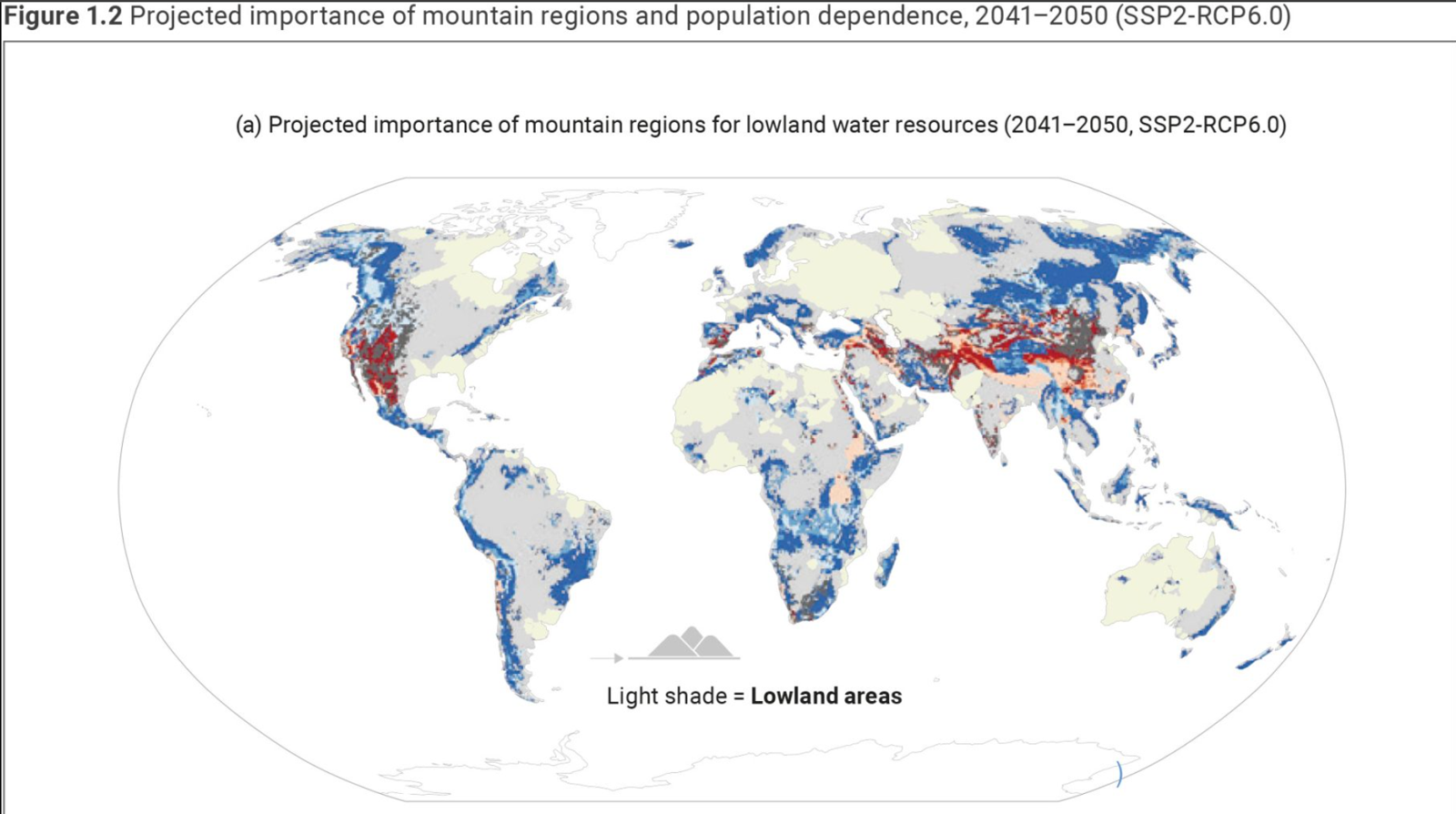
ED’s Corner: Nothing that happens in the mountains stays in the mountains!
Happy (belated) World Water Day 2025! 2025’s World Water Day

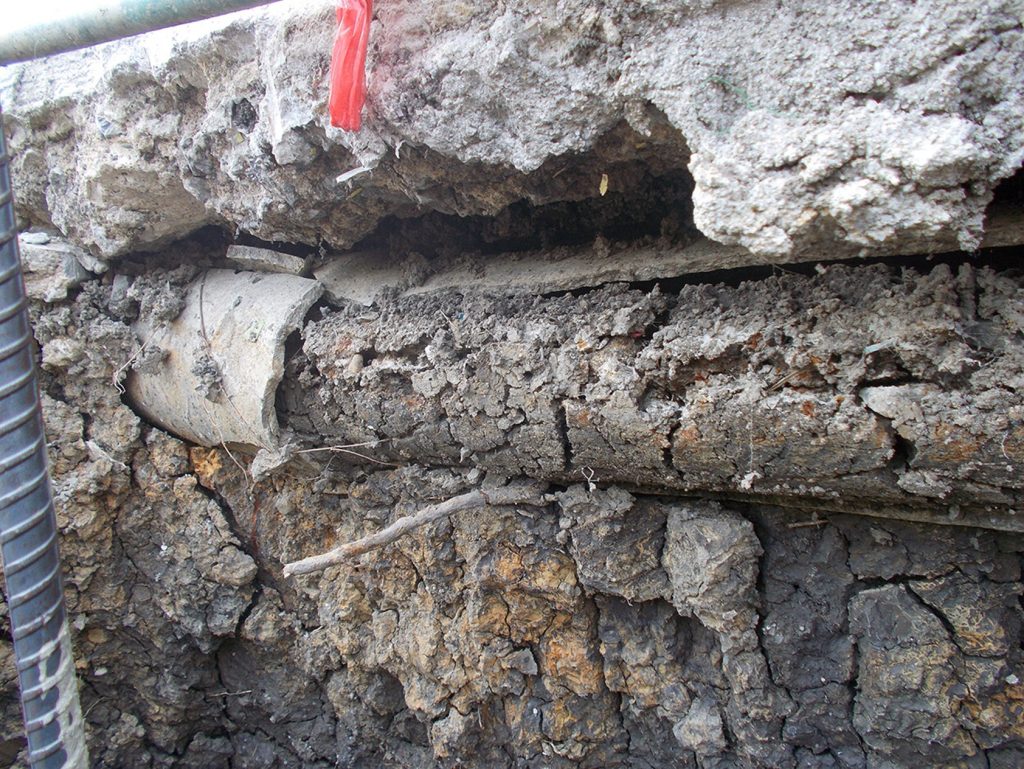
Asbestos. The word itself causes a knee-jerk reaction for most people, and for good reason. Asbestos is a well-documented carcinogen (cancer causing substance). An individual who inhales asbestos fibres can increase their risk of lung cancer 5-fold [1].
Asbestos is commonly used in insulation and other industrial composites throughout the world. It was widely discontinued in Canada and the US in the late 1970s when its severe health risks were discovered [2]. While the construction of new materials containing asbestos fibres stopped, only a portion of existing infrastructure containing asbestos was removed and replaced. In Canada, it can be found in the water pipes that deliver our most precious resource to our homes, schools, and businesses.
Asbestos-Concrete pipes (AC pipes) are water pipes composed of concrete and asbestos, popularized due to their resilience, tensile strength when under stress, and strong protection against corrosion. Many of these pipes have begun to reach the end of their lifespan of 50-70 years [3]. When the walls of these pipes begin to corrode, mechanical strength is lost, the pipes leach calcium, and asbestos fibres can enter the waterways [4]. Before you panic, it should be noted that while asbestos has been documented as a known respiratory carcinogen, the evidence of its carcinogenicity in water is disputed. The official stance of the Government of Canada is that there is “not consistent, convincing evidence” that asbestos ingested through water is harmful to human health [5]. This has led to an absence of monitoring and restriction of asbestos levels in Canadian waterways.
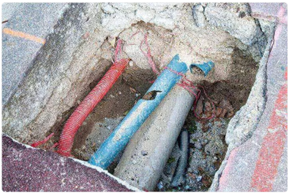
AC piping still exists in a significant portion of water pipes in Canada. As of 2023, in Regina, 48% of their water network was supplied by AC pipes, which amounts to ~531km of AC piping [6]. With the significant presence of asbestos in pipes throughout Canada, and their impending degradation, higher levels of asbestos could be entering the water distribution system soon. In the following paragraphs, we’ll explore the origins of asbestos use, the end of its use in industrial production, and discover its potential to contaminate water, and what that may mean for human health.

Asbestos was first used in construction and material infrastructure at the beginning of the 1900s in Italy, and within 30 years had spread to many industrialized countries including Canada, USA, the United Kingdom, and Australia [7].
AC pipes were used in a range of infrastructure developments, from insulation to water transport. It became very popular in water transport infrastructure, being implemented across Canada and the USA until 1977, due to health worries stemming from its manufacturing. Workers could be subjected to airborne asbestos fibres which had become a known “respiratory carcinogen” (a cancer-causing substance that can be breathed in). However, many of the pipes that had been installed were not removed.
It is estimated that up to 18% of water distribution pipes across Canada and the US are asbestos based [8]. There has been lots of work done over the past decades to replace these pipes in major cities. However, they are still prevalent within smaller cities, like Regina [9]. The US Environmental Protection Agency estimates that there is still over a million kilometres of AC piping buried underground in the USA [10].
The evidence surrounding the dangers of water contamination by asbestos is mixed. There have been a substantial number of studies done which have traced a correlation between consuming asbestos contaminated water and gastrointestinal cancers, while others have not found a correlation [11]. One study found that asbestos accumulates in the colon [12], and while more research is needed to understand the health impacts, it suggests that we don’t excrete all the asbestos we consume.
Two of the key concepts of the scientific method, are the concepts of “correlation” and “causation”. In the case of AC Pipes, we can examine if we can directly trace an increase in cancer prevalence because of asbestos. That is causation. Much of this evidence I am referencing is on the “correlating” side, and we need to continue researching this is to confirm, or deny, any “causative” relationship.
Whether the evidence supports or denies the claims that ingesting asbestos has health implications, many nations have introduced precautionary policies surrounding asbestos concentrations in water. The USA Environmental Protection Agency (EPA) has a maximum contaminate level of 7 million fibres of asbestos per litre of water [13]. If concentrations rise above this level, water suppliers are required to notify customers within 30 days [14]. This resulted from extensive studies conducted by the EPA in 1987, and while they did not find sufficient direct evidence supporting cancer risk, they highlighted the importance of removing it from water supply systems [15]. The World Health Organization has emphasized the importance of minimizing the amount of asbestos in drinking water [16]. A branch of the Canadian government, known as the National Research Council Canada (NRCC), conducted experiments in 2010 which pointed out the leaching of asbestos from AC pipes, and the dangers of showers and humidifiers that used asbestos contaminated water [17]. Despite this, the Canadian Government has no restrictions on asbestos in water, maintaining their stance on the lack of consistent, evidence.
Whether you believe one side or the other, there is another major factor to consider: money. If every governing body were to immediately accept the “inconsistent” evidence and begin to enact policies to remove and replace these pipes, they would be committing to massive infrastructure projects. One can see the predicament governments and health agencies face. In a time where green-lighting expensive infrastructure projects is extremely difficult, particularly in Canada where we are currently dealing with other serious economic and infrastructure issues, it is difficult to justify a massive investment without concrete evidence. No pun intended.
An example of the magnitude of these costs comes from a UK Water Industry Research Limited (UKWIR) report which projects the replacement of the 50,000 km of AC pipes across the UK would cost between £5-8 Billion [18] (CAD $ 9-14 billion). While I did not find comparative projections for replacing these pipes in Canada, if we were to assume similar costs to the UK projections (using the lower figure), we could estimate that replacing all the AC pipes in Regina alone, which as of 2023 still has ~ 531.0 km of AC piping [19], would equate to ~£53.1 million, or ~CAD$95 million. Nearly $95 million for one city alone. In the grand scheme of public projects this may not be an outrageous cost for larger cities, but this can become a significant financial burden for smaller municipalities.
Is all this money talk a justification for potentially putting human health at risk? No. This is proof of how crucial continual research is.
While evidence of asbestos being a cancer-causing contaminant when ingested is incomplete, we do know that it is not fully excreted when consumed. More in-depth research must be conducted to properly understand the further consequences. There are many cases in our past in which we neglected potential public health concerns, cigarette smoking for example, where long term respiratory effects were felt before they were researched and understood. We felt the dire consequences of that when an entire generation became highly susceptible to lung cancer.
What to take away from this is not to fear the water you are drinking, since water treatment plants treat and remove harmful pollutants and contaminants. But it is worrying is that these pipes were installed in the 1970s, were given a lifespan of ~70 years, and their time is coming to an end. We have begun to see major water pipes installed in the mid-20th century begin to fall apart, such as the major water main break that occurred in Calgary this past summer [20]. Functional infrastructure is crucial to maintaining quality of life, and we must replace it This is an issue in several different countries, and the necessary research and initiatives worldwide must address this in the near future.
Brendan Bate. Recent graduate from Queen’s University in Life Sciences and Economics.
[1] Klebe, S., Leigh, J., Henderson, D. W., & Nurminen, M. (2019). Asbestos, Smoking and Lung Cancer: An Update. International journal of environmental research and public health, 17(1), 258. https://doi.org/10.3390/ijerph17010258 Accessed 2024-10-05 Accessed 2024-10-05.
[2] Safe Drinking Water Foundation, n.d., Asbestos in Water and Asbestos Cement Water Pipes. https://www.safewater.org/fact-sheets-1/2017/1/18/asbestos-in-water-and-asbestos-cement-water-pipes. Accessed 2024-10-05.
[3] Safe Drinking Water Foundation, n.d., Asbestos in Water and Asbestos Cement Water Pipes. https://www.safewater.org/fact-sheets-1/2017/1/18/asbestos-in-water-and-asbestos-cement-water-pipes. Accessed 2024-10-05.
[4] Exponent, n.d., Asbestos-Cement Pipe in Water Distribution Systems. https://www.exponent.com/capabilities/asbestos-cement-pipe-water-distribution-systems. Accessed 2024-10-03.
[5] Katharine Quarmby. BBC, 2024-01-24. Asbestos in drinking water: What does it mean for Human Health? https://www.bbc.com/future/article/20240124-asbestos-in-drinking-water-an-overlooked-health-risk. Accessed 2024-10-01.
[6] CTV News, 2023-03-27, Map: Where are the asbestos cement pipers delivering drinking water in Canada? https://www.ctvnews.ca/w5/map-where-are-the-asbestos-cement-pipes-delivering-drinking-water-in-canada-1.6330752. Accessed 2024-10-02.
[7] Safe Drinking Water Foundation, n.d., Asbestos in Water and Asbestos Cement Water Pipes. https://www.safewater.org/fact-sheets-1/2017/1/18/asbestos-in-water-and-asbestos-cement-water-pipes. Accessed 2024-10-05.
[8] Safe Drinking Water Foundation, n.d., Asbestos in Water and Asbestos Cement Water Pipes. https://www.safewater.org/fact-sheets-1/2017/1/18/asbestos-in-water-and-asbestos-cement-water-pipes. Accessed 2024-10-05.
[9] CTV News, 2023-03-27, Map: Where are the asbestos cement pipers delivering drinking water in Canada? https://www.ctvnews.ca/w5/map-where-are-the-asbestos-cement-pipes-delivering-drinking-water-in-canada-1.6330752. Accessed 2024-10-02.
[10] Katharine Quarmby. BBC, 2024-01-24. Asbestos in drinking water: What does it mean for Human Health? https://www.bbc.com/future/article/20240124-asbestos-in-drinking-water-an-overlooked-health-risk. Accessed 2024-10-01.
[11] Katharine Quarmby. BBC, 2024-01-24. Asbestos in drinking water: What does it mean for Human Health? https://www.bbc.com/future/article/20240124-asbestos-in-drinking-water-an-overlooked-health-risk. Accessed 2024-10-01.
[12] Caraballo-Arias, Y., Roccuzzo, F., Graziosi, F., Danilevskaia, N., Rota, S., Zunarellli, C., Caffaro, P., Boffetta, P., Bonetti, M., & Violante, F. S. (2023). Quantitative Assessment of Asbestos Fibers in Abdominal Organs: A Scoping Review. La Medicina Del Lavoro | Work, Environment and Health, 114(6), e2023048. https://doi.org/10.23749/mdl.v114i6.14946. Accessed 2024-10-06.
[13] ATSDR, 2023-05-19. What are U.S. Standars and Regulations for Asbestos Levels? https://www.atsdr.cdc.gov/csem/asbestos/standards_and_regulations.html. Accessed 2024-10-03.
[14] Sean Marchese. Asbestos.com, 2024-08-06. Asbestos in the Water Supply. https://www.asbestos.com/exposure/water-supply/. Accessed 2024-10-06.
[15] Fresh Outlook Foundation, n.d., Asbestos Cement Water Pipes – Should We Be Concerned? https://freshoutlookfoundation.org/asbestos-cement-water-pipes-should-we-be-concerned/. Accessed 2024-10-08.
[16] Katharine Quarmby. BBC, 2024-01-24. Asbestos in drinking water: What does it mean for Human Health? https://www.bbc.com/future/article/20240124-asbestos-in-drinking-water-an-overlooked-health-risk. Accessed 2024-10-01.
[17] Fresh Outlook Foundation, n.d., Asbestos Cement Water Pipes – Should We Be Concerned? https://freshoutlookfoundation.org/asbestos-cement-water-pipes-should-we-be-concerned/. Accessed 2024-10-08.
[18] UKWIR, 2020. Asbestos Cement (AC) Water Mains Deterioration And Failure Prediction Models. https://ukwir.org/asbestos-cement-water-mains-deterioration-and-failure-prediction-models-0. Accessed 2024-10-07.
[19] CTV News, 2023-03-27, Map: Where are the asbestos cement pipers delivering drinking water in Canada? https://www.ctvnews.ca/w5/map-where-are-the-asbestos-cement-pipes-delivering-drinking-water-in-canada-1.6330752. Accessed 2024-10-02.
[20] 2024-06-07. Calgary will run out of water ‘in the days to come’ if current usage doesn’t drop, city says. https://www.cbc.ca/news/canada/calgary/water-feeder-main-break-update-calgary-northwest-1.7227911. Accessed 2024-10-15.

Happy (belated) World Water Day 2025! 2025’s World Water Day

What is Asbestos? Asbestos. The word itself causes a knee-jerk
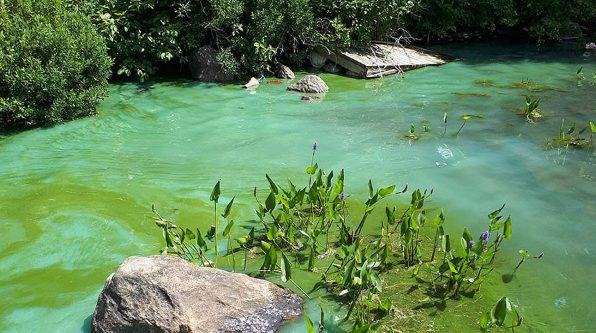
What is pathology? At its core and most basic definition,
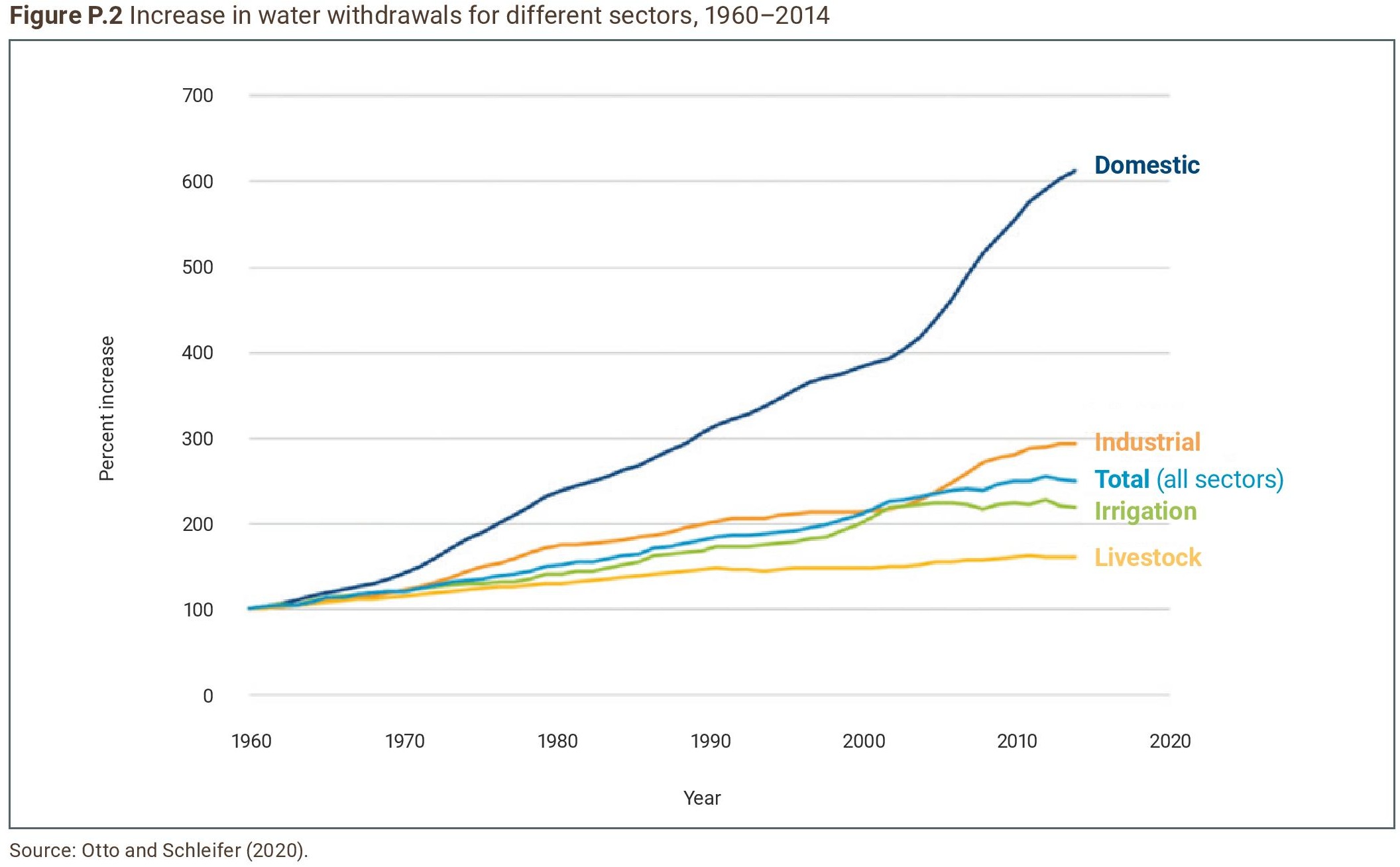
As I settle down to read the latest UN Water
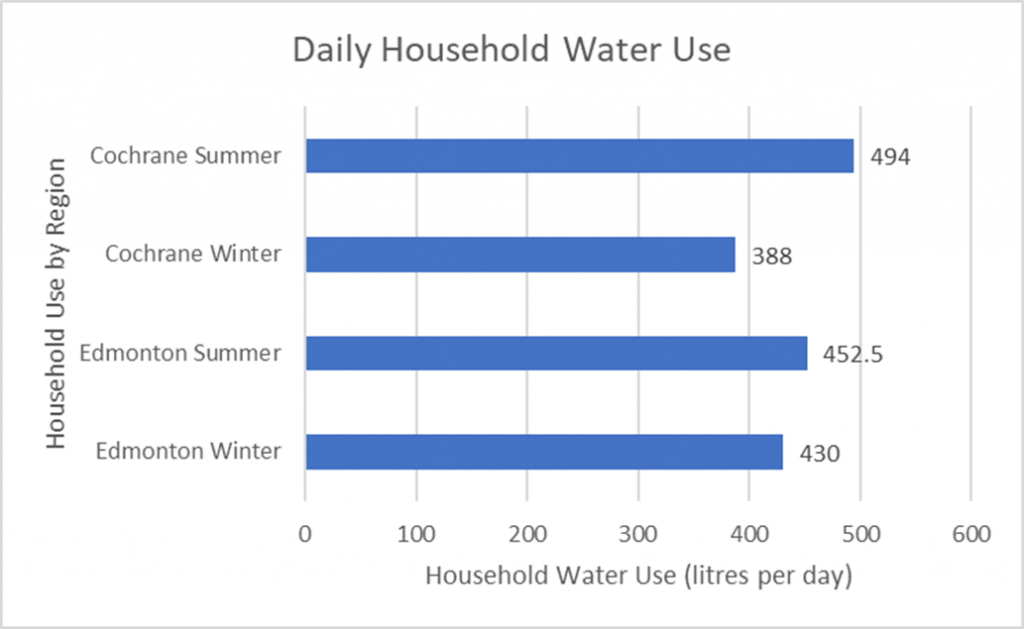
Access to water, water use, and water conservation are of
We provide Canadian educational resources on water practices to promote conservation and sustainability. Our team crafts current and relevant content, while encouraging feedback and engagement.
The Canada WaterPortal is a registered charity, #807121876RR0001
We recognize and respect the sovereignty of the Indigenous Peoples and communities on whose land our work takes place.
© 2025 All Rights Reserved.